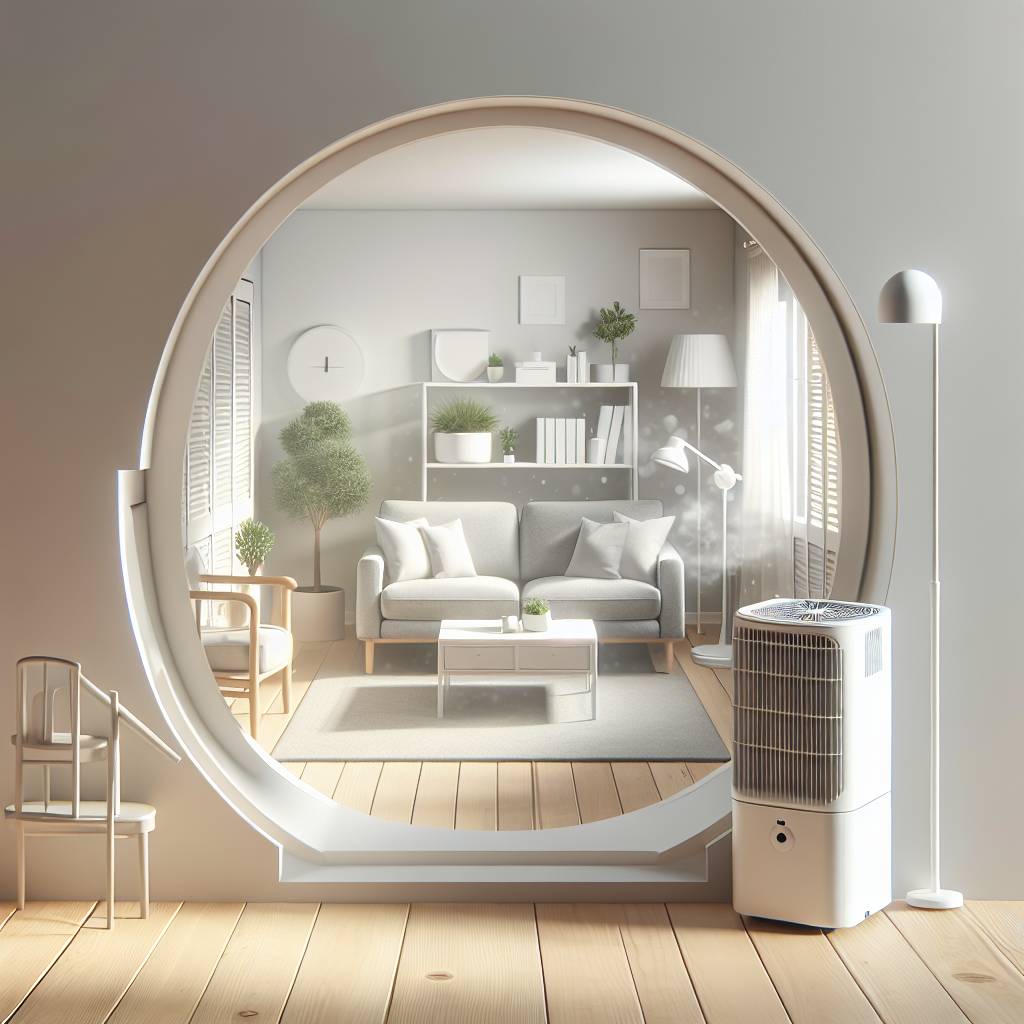Optimal Placement Of Air Purifiers For Asthma Sufferers
For asthma sufferers, the best spots to place air purifiers are in the bedroom and living areas where they spend most of their time. It’s important to position them away from walls and furniture for better airflow. Also, placing one near the entrance can help catch pollutants before they spread through your home. This setup helps clean the air you breathe most often, reducing asthma triggers.

How does the placement of an air purifier affect its effectiveness for asthma sufferers?
The placement of an air purifier is crucial in maximizing its effectiveness, especially for individuals suffering from asthma. When positioned correctly, an air purifier can significantly reduce the amount of airborne irritants that can trigger asthma symptoms. These irritants include dust, pollen, pet dander, and smoke particles.
Placing an air purifier in a spot where airflow is not obstructed allows it to capture and filter out pollutants more efficiently. For instance, keeping it away from furniture and walls improves the circulation of air through the device. This strategic placement ensures that more contaminated air passes through the purifier, allowing clean air to be distributed throughout the room.
Moreover, considering the room’s size and layout when positioning an air purifier enhances its performance. A central location often works best in large rooms to ensure even distribution of purified air. In contrast, in smaller spaces, placing the unit closer to the pollution source can be more effective in providing relief for asthma sufferers.
What are the best rooms in a home to place air purifiers for someone with asthma?
For individuals with asthma, placing air purifiers in rooms where they spend most of their time is essential. The bedroom is arguably the most critical location for an air purifier because people typically spend many hours sleeping there each night. Ensuring that the air in this space is free from allergens can significantly improve sleep quality and overall health.
Looking for a way to breathe easier at home? Check out our favorite air purifier for asthma and discover how it can help. Dive into the details here.
The living room is another vital area to consider since it’s a common space for relaxation and family gatherings. Air purifiers placed here help reduce exposure to triggers such as pet dander and dust mites commonly found in upholstery and carpets.
Kitchens also benefit from having an air purifier due to cooking fumes and potential mold spores that can aggravate asthma symptoms. However, it’s important to choose a model designed to handle these types of pollutants effectively when placing one in this environment.
How close should an air purifier be to your bed if you have asthma?
If you have asthma, positioning an air purifier near your bed can provide significant benefits by ensuring you breathe cleaner air while sleeping. Ideally, placing the unit within 3 to 5 feet of your bed allows for optimal inhalation of purified air. This proximity helps create a clean breathing zone around where you sleep.
However, it’s also important not to place the unit directly on your bedside table or too close where it might cause discomfort or disrupt sleep with noise or airflow. A balance between closeness for effective purification and comfort needs to be achieved for restful sleep without exacerbating asthma symptoms.
Adjusting settings like fan speed overnight can also help maintain comfort while still ensuring clean air delivery. Some models come equipped with night modes designed specifically for quieter operation which makes them ideal companions for asthmatic individuals seeking relief during sleep.
Can the height at which an air purifier is placed impact its efficiency for asthma relief?
The height at which an air purifier is placed does indeed play a role in its efficiency concerning providing relief from asthma symptoms. Elevating the unit off the ground enables better distribution of purified air throughout a room since warm contaminated airs tend rise while cooler cleaned airs tend sink.
Airborne particles such as pollen or dust mites are lighter than air and tend to float at various levels within a room depending on current airflow patterns. By positioning an air purifier at about 3-5 feet off ground level—either on a table or shelf—it’s more likely to intercept these particles before they spread further into living spaces.
This strategic placement ensures that purified airs circulates more effectively across different heights within a room reaching breathing zones more efficiently thus offering improved protection against triggers known exacerbate asthmatic conditions without compromising overall comfort or convenience within living environments.
| Room/Area | Optimal Placement | Reason |
|---|---|---|
| Bedroom | Near the bed, but not directly facing it | To filter air where you spend a significant amount of time, without direct airflow causing discomfort |
| Living Room | Central location, away from windows | To maximize air circulation and filtration in common areas |
| Home Office/Study | Near the desk or work area | To ensure clean breathing air in the workspace |
| Kitchen | Away from the stove, near the dining area | To reduce cooking odors and potential irritants, while not interfering with cooking appliances |
| Children’s Room | Near the play area, but out of reach | To keep the air clean where children spend a lot of time, ensuring safety from the device |
Should air purifiers be used in every room for asthma sufferers, or are specific locations better?
Using air purifiers in every room might seem like a good idea for people with asthma. However, it’s not always necessary or practical. It’s more important to place air purifiers where they spend most of their time. This includes bedrooms and living areas where they relax or play.
For someone with asthma, the bedroom is especially critical because we breathe deeply while sleeping. Placing an air purifier in the bedroom can help reduce asthma triggers at night. Living rooms are also key areas since families spend a lot of time there. It’s about targeting the places that matter most for clean air.
How do different types of air purifiers affect placement strategies for asthma management?
Different types of air purifiers work best in certain situations. For example, HEPA filters are great at capturing small particles like pollen and dust mites. These are common triggers for asthma attacks. So, placing HEPA filter air purifiers in areas where these particles accumulate is smart.
On the other hand, activated carbon filters are good at removing gases and odors from the air. If someone with asthma is sensitive to smells or chemicals, using an air purifier with this type of filter in the kitchen or near a bathroom could be beneficial. Understanding the strengths of each type helps decide where to place them effectively.
What considerations should be taken into account when placing an air purifier in a child’s room who has asthma?
When placing an air purifier in a child’s room, safety is paramount. The unit should be out of reach to prevent accidents or tampering. Also, consider noise levels since loud noises can disturb sleep. Many modern air purifiers have quiet operation modes that are perfect for nighttime use.
Another consideration is airflow direction and room layout. The air purifier should not be blocked by furniture or curtains as this reduces its effectiveness. Positioning it near the child’s bed but not directly facing it ensures clean air circulates well around their breathing space without causing discomfort.
Final Thoughts
In conclusion, while using an air purifier can significantly benefit those suffering from asthma, strategic placement enhances its effectiveness. Not all rooms may need one if you prioritize areas where asthmatics spend most of their time and sleep.
Different types of filters target various pollutants, so choosing and positioning your device accordingly can make a big difference in managing asthma symptoms—especially in children’s rooms where safety and comfort must also be considered alongside efficacy.






